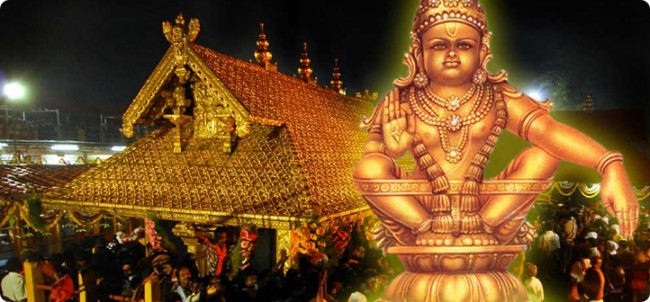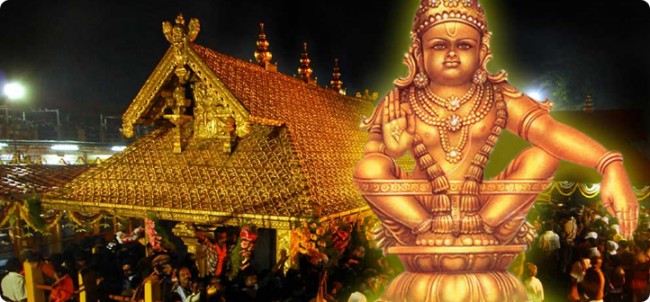
BY MOHAN NAIR*
Controversies over religious beliefs and traditions are not new in modern society, and India and the Sabarimala Temple are not an exception. The proponents of the tradition will contend that faith is unquestionable and may even go to the extent of questioning the locus standi of those challenging the tradition. The opponents of the tradition, on the other hand, will rely on the fundamental rights guaranteed by the Constitution. The strategy adopted by the courts in crucial matters like faith and religion is to either prolong the cases and give it a natural death or take a status quoits approach mostly driven by the perceived desire to maintain law and order and social harmony. A glaring example of this is the Ram Janmabhoomi case. If it is a legal, civil or criminal matter, there is no justification for the case to be pending over half a century. Therefore, somewhere there is an inherent dilemma for the presiding judges when an issue relating to faith and tradition is brought before his/her bench for adjudication.
Coming to the subject, should women in the menstruating age group be allowed entry into the Sabarimala Temple? Broadly there are six questions that needs to be addressed.
1. Will permitting women pilgrims in their menstruating age go against the basic tenets of the prathishta of the presiding deity Lord Ayyappa in Sabarimala, which is Brahmacharya?
2. Will female pilgrims breach the “Brahmacharya” of the accompanying male pilgrims?
3. Will allowing pilgrims of both sexes in all ages affect the sanctity of pilgrimage to Sabarimala as a pious religious tradition of which the foundation is Brahmacharya or will it get converted into a hiking or picnic trip?
4. Is the notion that trekking through the difficult mountains and terrains to reach Sabarimala is difficult to women the reason for the restriction?
5. Is safety and security of women the reason why they were not traditionally venturing into the Sabarimala pilgrimage?
6. Is it the notion that women, during menstruation, are impure and cannot complete the mandatory vratham (fast) as the menstruation cycle is shorter than the 41 days Mandala Vratham prescribed, and observing fast and conducting rituals are not practiced during menstruation period?
Let us examine all of them one by one:
- The Prathishta of Lord Ayyappa is of a Brahmachari. Ayyappan wants to remain a Brahmachari, which is why Ayyappan is said to have set a difficult condition on the proposal of marriage with Malikappuram, the lady Deity (bride in waiting) in Sabarimala. The condition believed to have been set is that Ayyappan will stop the observance of Bramacharya the day a new pilgrim (Kanniswamy) stops coming to Sabarimala, and marry Malikappuram. The pilgrims offer darshan and pooja to Malikappuram on their trip. The presence of Malikappuram is therefore not a distraction to the Brahmachari status of the Lord. Nor does Lord Ayyappan restrain his devotees paying darshan to Malikappuram. Therefore, there appears to be no restrictions to the presence of women at Sabarimala in concept.
- This if true is not the problem of women pilgrims. If the fear is of men breaching their Brahmacharya because of the mere presence of women pilgrims around, I would say that those men are unfit to pass the Brahmachari test and are the candidates qualifying the ban. It is unfair to ban the women pilgrims because of the men who cannot control themselves.
- Yes, this is a potential consequence. We have seen this happening in many other places of worship as well. But this is not a men and women issue. It is degeneration of societal norms. The answer to this is the true belief and strict observance of Brahmacharya, which need not be a male specific phenomenon. The women pilgrims must also observe Brahmacharya in line with the tradition of the Sabarimala pilgrimage. You can call them Brahmachari or Brahmacharini. Moreover, it is a known fact that women observe the norms of the fast more strictly than men.
- This could be argued as a reason in the past. The trekking from Erumeli through Karimala, Neelimala all the way to Ponnambalam is indeed hard. Is it still the same way? The Erumeli route is much improved. There are several other routes to reach Sabarimala now. Transportation has improved. The threat of wild animals is substantially low in these days. Above all, women have conquered more difficult terrains and are no more considered less competent and courageous as compared to men.
- Safety of women pilgrims is an issue. It is currently an issue for the child, women over 50 ages and the older pilgrims as well. My son and I were caught in a stampede in the Marakkootam area in 2007 during Mandalavilakku, which was life threatening. My brother-in-law lost his “Irumudi kettu” and several of our group members got separated. The sea of humanity that flow to Sabarimala during the Mandala Vilakku and Makara Vilakku are difficult to manage with the available infrastructure. The policemen managing the crowd are not adequately trained to manage huge crowds like this. Women pilgrims in the contentious age group can be highly vulnerable in this atmosphere. With all the crimes that are committed against women, the criminals in the garb of pilgrims can exploit the situation and can cause a major law and order problem. The question however is whether a ban on women pilgrims of a particular age group is the answer? I think the right answer to this is to build infrastructure to support the needs of the pilgrims.
- There are two aspects in this, the length of the fasting period and the auspiciousness of doing rituals when menstruating. Let us discuss each of them separately.
- The Mandala Vratham is prescribed to be of 41 days or more. The pilgrims used to follow this in the past. Do all pilgrims observe 41 days of fast now? The answer is that there were aberrations to the duration of fasting period recently. There are pilgrims I know who do not observe the mandatory 41 day fast and still get to go to Sabarimala. If some pilgrims can go with less days of fast, it is not a big deal if the fast observance period is adjusted to fit the menstruation cycle.
- The purity is an issue of faith and I will leave it to those who are an authority on religious rituals and traditions to make the call. When I talk about the authority, it is not men alone but include religious scholars, repeat “religious scholars” of the affected group, in this case the women. It is a tradition followed by the women not to participate in religious rituals during the menstruation period. I have seen this practiced by my mother and sisters in my house, the women in the villages, towns, cities across India and Indians abroad. Some say it a prohibition but it is in reality a practice observed voluntarily by women. I can say this as voluntary practice for all the women I came into contact. I have not seen any male members putting any kind of pressure in this regard.
In conclusion, society should discontinue imposing the ban in the name of tradition. Nor should we allow forces who have no direct interest or intention in the observance of the faith and tradition to create divisions in the community. We will be better served if we leave such matters to the affected segment of the society and allow them to reform their practices as required by the time.
*About the Author: Mohan Nair grew up in a family of Lord Ayyappa worshipers. The author’s father started the pilgrimage to Sabarimala in his village in the early 1950s and undertook this pilgrimage for over 40 years in his lifetime. The author himself first visited Sabarimala temple at the age of six. More Blogs at http://sabrimala.blogspot.com, Twitter: mohanMNair



